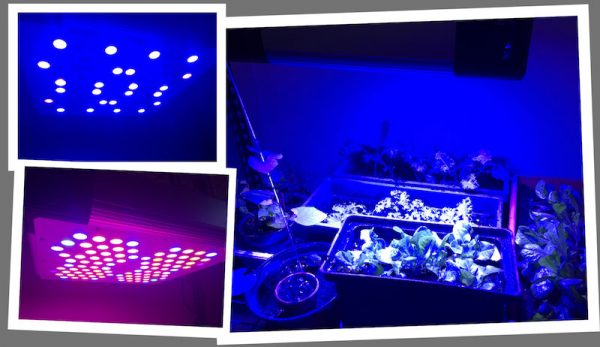
While I much prefer the great outdoors for growing my favorite veggies, herbs and flowers, the indoors can be pretty great, too—with the right technology in place. As I’ve gardened with supplemental lighting over the years, I’ve relied on everything from the wimpiest of early fluorescent bulbs to those electricity-draining metal halide and high-pressure sodium lamps.
Thankfully, there is a plethora of lighting choices now, many of which are more efficient and less expensive to operate. The development of “smart” home devices also has made indoor gardening easier. If I’m away from home and need to turn my lighting off or on, I can do this from anywhere with just a couple of keystrokes on my smartphone. Whether you’re already an indoor gardener or you’re thinking of giving it a try, here are a few tips and tricks and some notes on what’s new.
Decisions, Decisions. . .
When growing anything indoors, it’s up to us to provide the “sun,” the “rain,” the “wind” and the soil. Knowing how much of these to provide depends on what you hope to grow. For instance, if you simply want vegetative growth—think basil, kale or spinach—your setup will be a little more straightforward. Want to grow hot peppers, nasturtiums or even cherry tomatoes? For these you’ll need to provide the type and duration of light that will induce flowering.
The square footage you can spare will also dictate which plants (and how many) you can grow. After all, having a smaller number of thriving plants is preferable to a garden crammed with spindly, struggling specimens. Consider choosing dwarf and compact varieties whenever possible to maximize the use of your space.
Tech Talk
The size of your garden light also influences the size of your garden. The larger and more powerful your light, the larger the garden footprint can be.
The availability of newer LED bulbs has been a game-changer for indoor gardening. Small but mighty, different colors of light-emitting diodes can be combined to provide different portions of the light spectrum. The number and brightness of individual LEDs in a garden light determine its strength and the size of the area it can reliably illuminate.
The light I use covers about three square feet and includes nearly 100 LEDs in 10 different colors. Because I grow both vegetative and flowering plants, I paid a little more for a fixture with three distinct settings—a vegetative-only blue spectrum, a flowering-only red spectrum, and a combined vegetative-and-flowering option. (In the photo above, I show the blue spectrum and the combined full-spectrum option.) LED fixtures require little energy to run and they remain relatively cool; however, some of the fancier types like mine do come with built-in fans.
More Options
For something a little less expensive, consider T5 fluorescent fixtures. They’re more efficient and slimmer than old-school fluorescent tubes. They’re also extremely cool-running. Although “warm” flowering T5 tubes are available, in my experience, T5 fluorescent lights have worked best for vegetative-only (rather than fruiting or flowering) plants.
Whatever light you choose, take care to fasten it securely. I use small metal chains and carabiners to suspend mine from the bottom of a workbench. (This is also ideal, because I’m able to raise or lower my light, depending on which chain links I choose to connect my carabiners to.)
So that I can control my light remotely, I have also integrated a “smart” plug—connected to my wifi network—into my electrical outlet. Switched to the “on” position, my garden light plugs into the smart device itself, which I can turn off or on via an app on my smartphone.
Back to Basics
Despite all of the newest technological advances, some things never change—like the importance of providing adequate drainage for your plants. It may be tempting to use containers without drainage holes in the indoor garden, but your plants will suffer. Just make the effort to protect your floor with plastic sheeting, a large water-catchment tray or individual saucers under each plant. That way, you’re less likely to skimp on watering.
Because it can contain all sorts of pathogens and pests, you should also avoid bringing garden soil from outside into your indoor garden. Instead, use a sterile potting mix or renewable growing medium like coconut coir.
And, last but not least, to strengthen plant stems and make the going tougher for fungal gnats, whiteflies and other insects that might come calling, try using an oscillating fan to circulate the air in your indoor garden.
The winter might be dark and cold, but it doesn’t need to be plant-free. Indoor gardening will keep your green thumb active until it’s once again time to grow outdoors.




